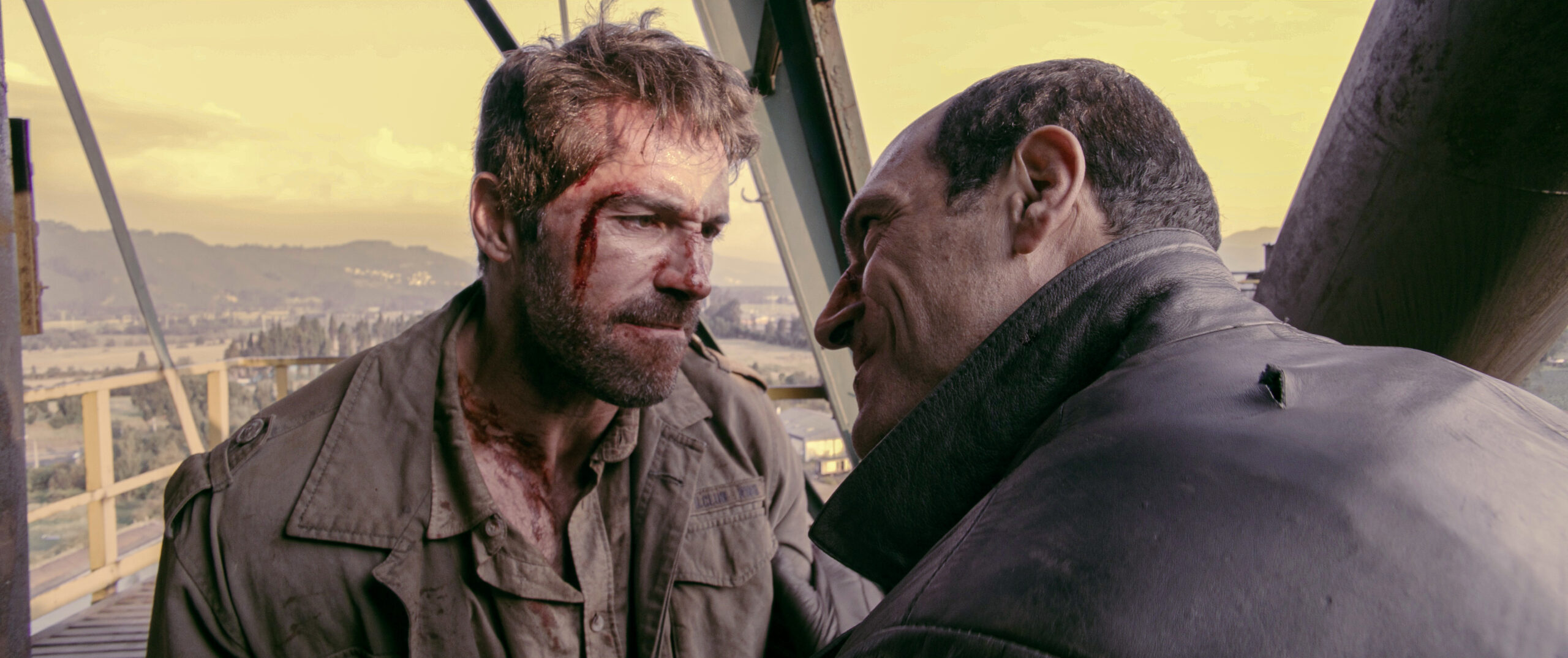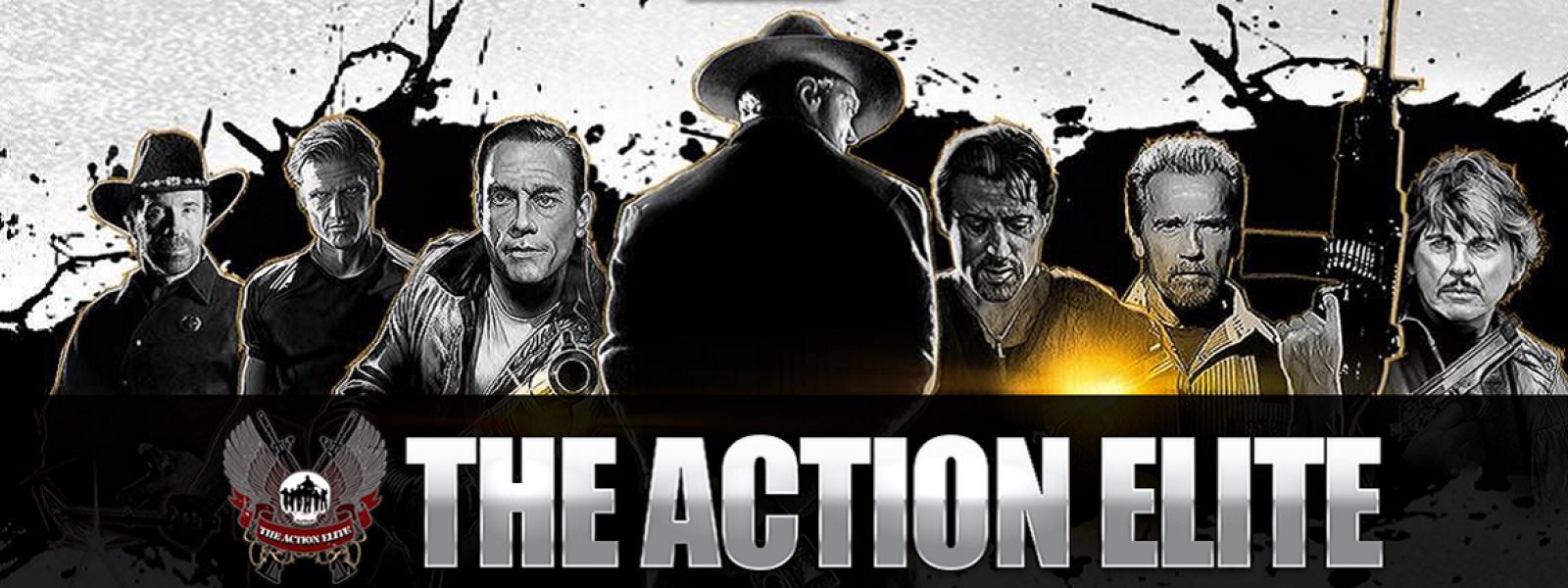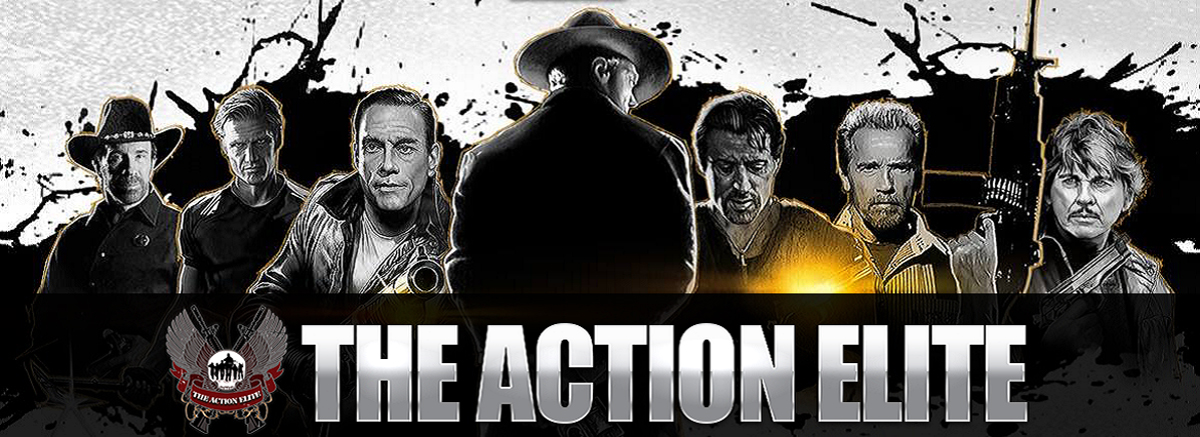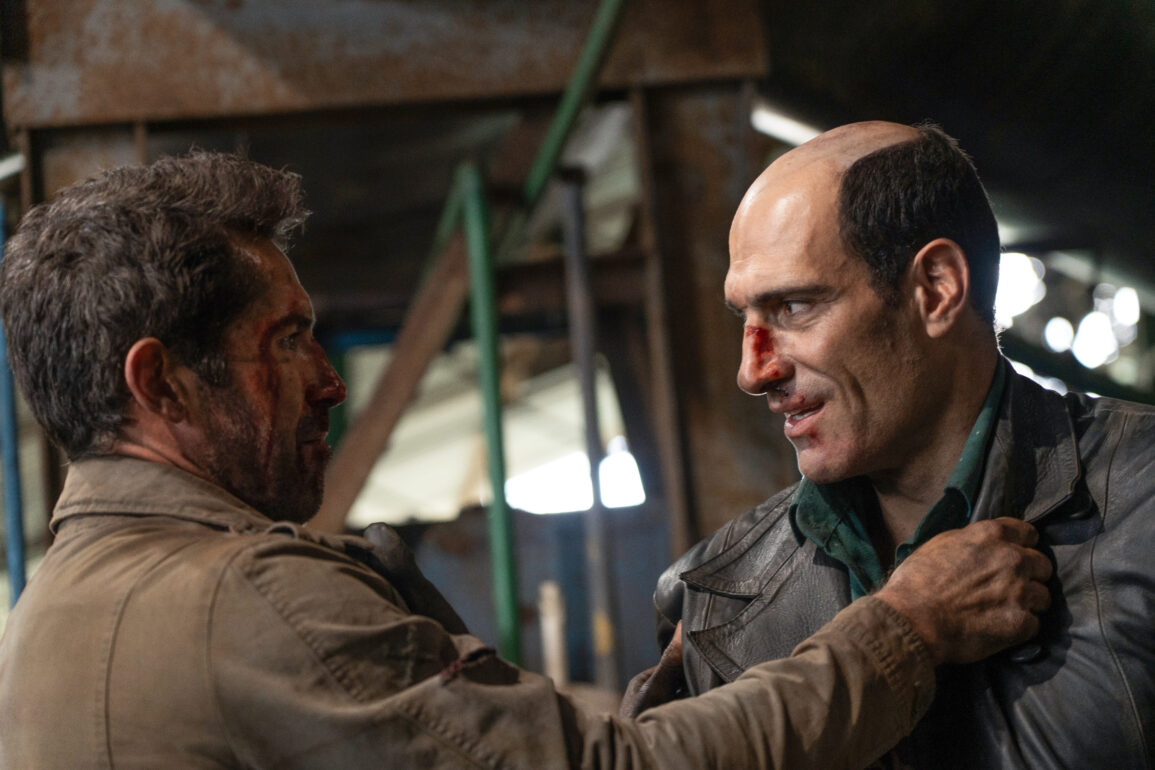Marko Zaror has starred in movies like Undisputed 3, Savage Dog, John Wick: Chapter 4, Fist of the Condor, Redeemer and many more. His latest has him starring alongside Scott Adkins in Diablo which is out now. Marko stopped by to chat with us about working on the film.
I love your character introduction in Diablo. Cake has never been more threatening. How did you prepare for this scene in terms of being quietly scary?
Well, this was a co-creation with the director Ernesto Diaz that he from the beginning knew that he wanted to bring an element of a horror movie into this movie, and that was through El Corvo. So, it took a time for us to kind of discover this character. I remember going for walks in Bogota, talking about the character, and once we discovered the character together, then we had to rewrite the whole script, the scenes, and make them totally according to what we were discovering of what the character was. So, it was a very fun and interesting process. And yeah, Ernesto has a love of Asian cinema. He showed me a lot of movies back in the day, and I also wanted to explore that and try to create this element of kind of horror, this feeling into this movie. So yeah, it was a very nice challenge on creating this character. Like I started from the way he walks and then a little bit of the wardrobe, and little by little the characters start appearing. So, it was very, very interesting process.
And speaking on that, I also love the look of El Corvo. Can you talk about the design of the metal hand and creating the whole look?
Yeah, the metal hand was, like Ernesto had the idea about the no hand situation, because I don’t know if you know, I don’t want to give spoilers, but it has to do with the past of El Corvo and his backstory with Vicente and all that, right. So then I said, “well, we need to put a Corvo. Corvo is like what the Chilean army use, and they were very scary. Like they have this knife that it does not slice, they go in with the knife and they can rip your bones, and they can take your guts out. And it was real; they use it in war. So, it was very scary. And I said, “we have to use the El Corvo in this hand behind, under this thing”. So, that’s how we start creating these. And then, the world, which I don’t know, it was just trying different clothes. And then suddenly I start finding, okay, these are the colors, this is the look, and then the hair; it was a fun process.

Nice. And what do you think makes for a memorable antagonist?
It’s an interesting question. It’s like, you never know you’re going to make a good villain until you just do it. And then you see the reactions of the people. I don’t know what I can say there. I think, at least to have like a good backstory or something mysterious, like I think the hand element in El Corvo, I think was a very good decision, because it has a cool backstory without saying the backstory. So, people started trying to understand, oh, what happened to this guy? It’s a tough question because sometimes you can follow a mimic of elements and then it doesn’t work, so you never know it’s going to work until you share the movie and then you see the reactions of the people. So, I don’t think there is a formula. I don’t think there’s a formula to create a good bad guy.
You did the action design for Diablo. Can you talk about making the fight scenes so visceral and the process of creating them?
Yeah, well, the fight scenes of Diablo had to do with the characters, right? So, understanding the motivations of each character is how you start creating these fight scenes. Like you have a father who is protecting his daughter. So, he’s kind of all the time on the run and then he’s maybe not the, the aggressor, and then you have this psychopath that is trying to kill and stop this guy. And then, he has a no hand situation that it creates an element that you need to create and tell a story through this element in the fight scene. So, that I think was a very important part of how to create these fight scenes. And I want to keep it real because the story is emotional and we wanted to keep it very grounded because of that, because I didn’t want the fight scene to take away and suddenly just being showing off without following the objective of, of the movie; that it was something serious. In this case, this fight scene, I want it to be, all the fights, I want it to be very grounded and feel real using the martial arts and using some of the fancier kicks and stuff like that, but always in a way that feels real.
How challenging is it to create action that feels fresh to audiences?
Yeah, well, that’s a challenge. That’s a challenge. But I feel if you stick to the characters again and to the story, you’re always telling different stories. Well, every story has been told, but when you’re making a movie, you’re playing with characters and different stories and elements. And if you start from there and you stay honest to that I think you have a chance to always do something different because you’re coming from a different background to create the fight scene.
How did you work with Scott Adkins on those fights?
Well, first, I work with the stunt team. I create the choreography. I do a pre0viz. I shoot it in the phone, edit it, put some sounds, show it to the director, show it to Scott for approval. I kind of know how he moves and his techniques. So, I show it to him and then he might want to change some stuff and tell DeMarco, “We can do here, we can do this”. It’s like a co-creation basically.
Why do you think you and Scott work so well together?
I just think that we’re both big kids doing what we love, and we have a lot of respect for and passion for martial arts and filmmaking. And we just want to have fun and make movies and try to do what we love to do. It’s very honest. It comes from a very honest place. When you’re working with people like that and we’ve developed a friendship in all these years. Since the first day we work in Undisputed, we connected right away, and we just enjoy and love movies. So, that’s our first thing that that connects us.
And similarly, you’ve worked with Ernesto several times. Why do you think you work so well together?
Same thing. We grew up together. We’re very close friends. We grew up together. We went to high school, and we shared this passion. He has this passion of filmmaking and I had for martial arts, right? And he was able to pass me that passion through movies and show me cinema. And I got engaged with that. And then the other way around, I was able to share my passion of martial arts and show him my martial art and movies and stuff like that. He was able to get into that world and that’s how we grew up, like making movies and watching movies and dreaming about all this stuff. So, it’s like working with a big brother.
How involved is Ernesto to get in the action or does he leave you to design it?
Well, each case is different. I present him a scene and then he makes comments. And then sometimes he also does the previous with me. It depends on timing, depends of, of the situation, but it’s a co-creation. We work always together, you know?
How would you like Diablo to resonate with audiences?
Well, I will love people to enjoy the movie as we enjoy doing it. And the same way we got inspired and enjoyed them back in the day, these types of movies; my idea is people to enjoy this movie and have a good time.
Thanks so much and all the best with the film.






